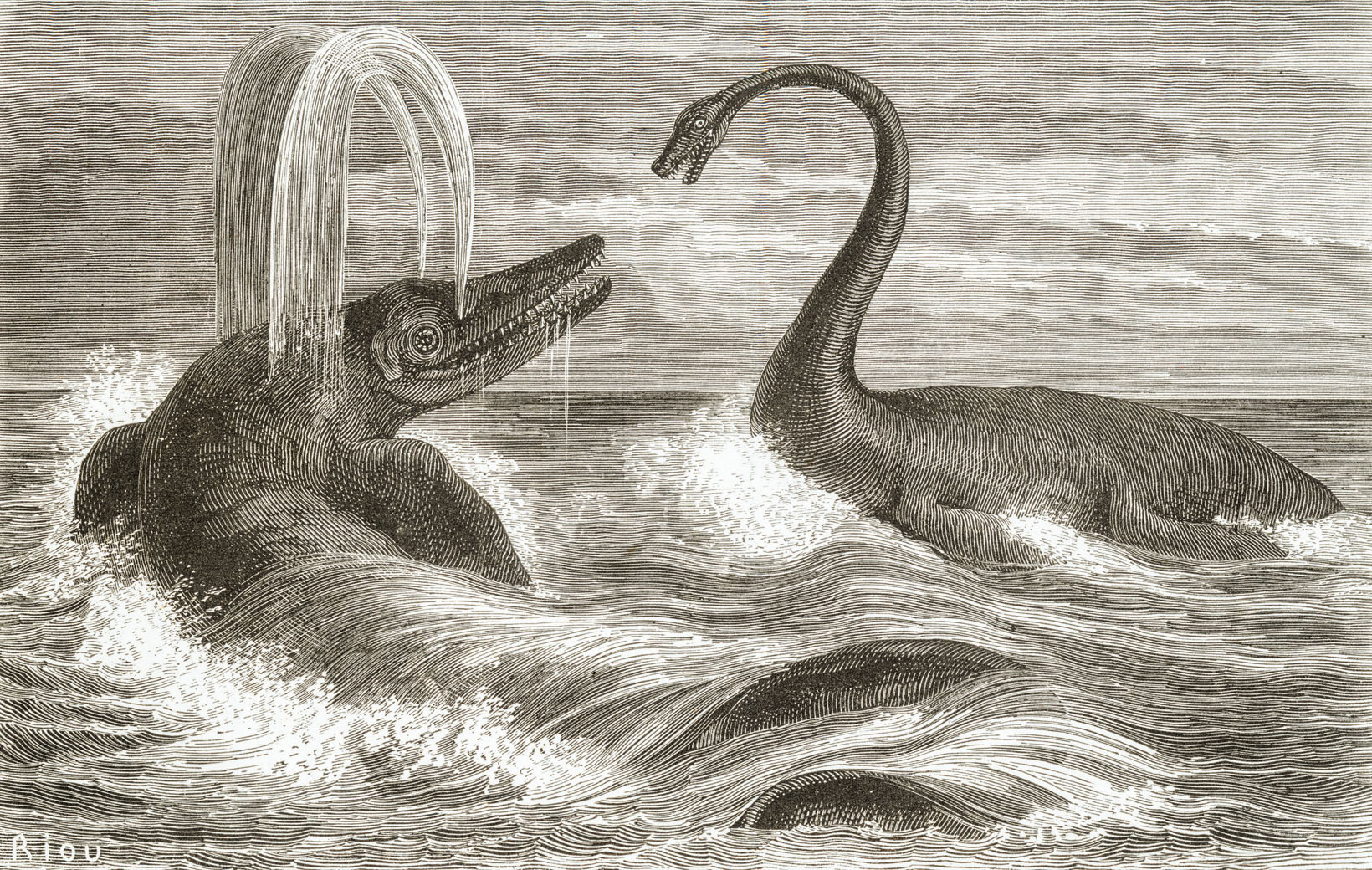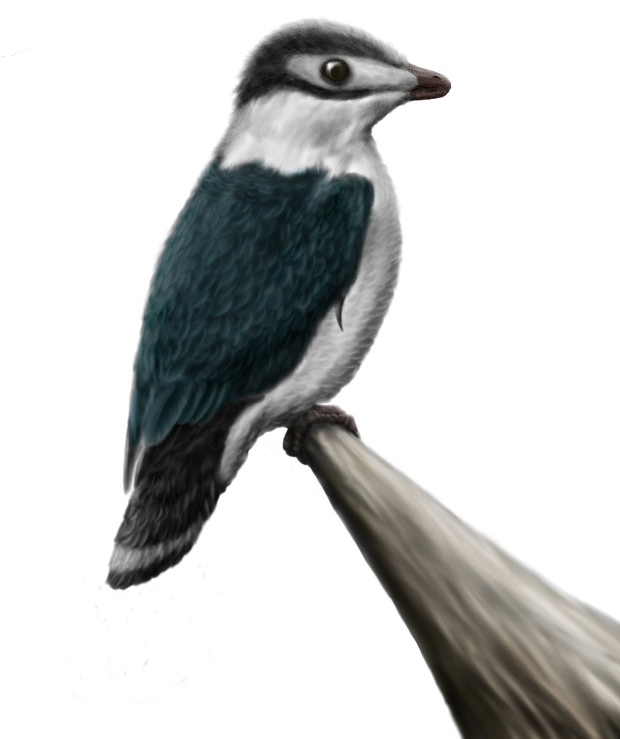|
Platypterygius
''Platypterygius'' is a historically paraphyletic genus of platypterygiine ichthyosaur from the Cretaceous period. It was historically used as a wastebasket taxon, and most species within ''Platypterygius'' likely are undiagnostic at the genus or species level, or represent distinct genera, even being argued as invalid. While fossils referred to ''Platypterygius'' have been found throughout different continents, the holotype Biological specimen, specimen was found in Germany. Description As ''Platypterygius'' contains multiple species not especially close to each other, little can be said in terms of shared characteristics. According to an analysis by Fischer (2012), all anatomical features used to unify ''Platypterygius'' species are either not actually present in each species, or much more widespread among unrelated ophthalmosaurs. Generally, species referred to this genus were large bodied macropredators based on their robust dentition. This is also supported by ''P. austral ... [...More Info...] [...Related Items...] OR: [Wikipedia] [Google] [Baidu] |
Maiaspondylus
''Maiaspondylus'' is an extinct genus of platypterygiine ophthalmosaurid ichthyosaurs known from Northwest Territories of Canada, the Cambridge Greensand of England and the Voronezh Region of Russia. Description ''Maiaspondylus'' is known from the holotype UALVP 45635, a disarticulated but nearly complete skeleton preserved in three dimensions and from the referred materials UALVP 45639, two articulated, partially preserved embryos and eight articulated vertebrae of an adult, UALVP 45640, 14 articulated vertebrae of a juvenile, UALVP 45640, 12 articulated vertebrae, UALVP 45642, a partial snout and left dentaries with teeth and UALVP 45643, a fragmentary snout. All specimens were collected at Hay River from the Loon River Formation, dating to the early Albian age of the Early Cretaceous, about 110 million years ago. All ''Maiaspondylus'' specimens were originally referred to ''Platypterygius''. However, all recent cladistic analyses found that ' ... [...More Info...] [...Related Items...] OR: [Wikipedia] [Google] [Baidu] |
Myobradypterygius
''Myobradypterygius'' is an extinct genus of ophthalmosaurid ichthyosaur from the Early Cretaceous (Barremian-Hauterivian) of Argentina and possibly also Chile. One species is known, ''M. hauthali'',Huene, F. von. (1927). Beitrag zur Kenntnis mariner mesozoischer Wirbeltiere in Argentinien. ''Centralblatt für Mineralogie, Geologie und Paläontologie, B'' 1927:22-29. which was once believed to have been a species of ''Platypterygius''.McGowan, C. (1972). The systematics of Cretaceous ichthyosaurs with particuliar reference to the material from North America. ''Contributions to Geology.'' 1972;11:9–29. ''Myobradypterygius'' is thought to have been a small ichthyosaur, with an estimated total body length of . Discovery and naming The holotype, MLP 79-I-30-2, a vertebral column and associated forelimbs, was discovered between 1900 and 1925 by Rudolph Hauthal at Nevado de Famatina, Argentina. The specimen was first described by Friedrich von Huene, von Huene (1925) and he reconst ... [...More Info...] [...Related Items...] OR: [Wikipedia] [Google] [Baidu] |
Ichthyosaur
Ichthyosauria is an order of large extinct marine reptiles sometimes referred to as "ichthyosaurs", although the term is also used for wider clades in which the order resides. Ichthyosaurians thrived during much of the Mesozoic era; based on fossil evidence, they first appeared around 250 million years ago ( Ma) and at least one species survived until about 90 million years ago, into the Late Cretaceous. During the Early Triassic epoch, ichthyosaurs and other ichthyosauromorphs evolved from a group of unidentified land reptiles that returned to the sea, in a development similar to how the mammalian land-dwelling ancestors of modern-day dolphins and whales returned to the sea millions of years later, which they gradually came to resemble in a case of convergent evolution. Ichthyosaurians were particularly abundant in the Late Triassic and Early Jurassic periods, until they were replaced as the top aquatic predators by another marine reptilian group, the Plesiosauria, i ... [...More Info...] [...Related Items...] OR: [Wikipedia] [Google] [Baidu] |
Platypterygiine
Platypterygiinae is an extinct subfamily of ophthalmosaurid thunnosaur ichthyosaurs from the early Late Jurassic to the early Late Cretaceous (Kimmeridgian - Cenomanian) of Asia, Australia, Europe, North America and South America. Currently, the oldest known platypterygiine is '' Brachypterygius''. Platypterygiines were characterized by square tooth roots in cross-section, an extremely reduced extracondylar area of the basioccipital, prominent dorsal and ventral trochanters on humerus and ischiopubis lacking an obturator foramen. Phylogeny Platypterygiinae was named in 2001 by Maxim S. Arkhangelsky and dually noted by colleague Aleski Masluk. It is a stem-based taxon defined phylogenetically for the first time by Fischer ''et al.'' (2012) as "all taxa closer to '' Platypterygius hercynicus'' than to ''Ophthalmosaurus icenicus''". The cladogram A cladogram (from Greek language, Greek ''clados'' "branch" and ''gramma'' "character") is a diagram used in cladistics to show re ... [...More Info...] [...Related Items...] OR: [Wikipedia] [Google] [Baidu] |
Simbirskiasaurus
''Simbirskiasaurus'' is an extinct genus of ichthyosaur from the Early Cretaceous (early Barremian) of Ulyanovsk Oblast, Russia.Valentin Fischer, Maxim S. Arkhangelsky, Darren Naish, Ilya M. Stenshin, Gleb N. Uspensky and Pascal Godefroit (2014) Simbirskiasaurus and Pervushovisaurus reassessed: implications for the taxonomy and cranial osteology of Cretaceous platypterygiine ichthyosaurs. Zoological Journal of the Linnean Society 171(4): 822–841. http://onlinelibrary.wiley.com/doi/10.1111/zoj.12158/abstract Its type specimen is YKM 65119, a fragmentary skull and vertebral column.Storrs, G. W., M. S. Arkhangel'skii and V. M. Efimov. 2000. Mesozoic marine reptiles of Russia and other former Soviet republics. pages 187-210 In Benton, M. J., M. A. Shiskin, D. M. Unwin and E. N. Kurochkin, (eds.), The Age of Dinosaurs in Russia and Mongolia, Cambridge University Press, Cambridge. Description Fischer ''et al''. give the diagnosis of ''Simbirskiasaurus'' as follows: "Platypterygiine op ... [...More Info...] [...Related Items...] OR: [Wikipedia] [Google] [Baidu] |
Ichthyosaurus
''Ichthyosaurus'' (derived from Greek () meaning 'fish' and () meaning 'lizard') is a genus of ichthyosaurs from the Early Jurassic (Hettangian - Pliensbachian) of Europe (Belgium, England, Germany and Portugal). Some specimens of the ichthyosaurid '' Protoichthyosaurus'' from England and Switzerland have been erroneously referred to this genus in the past. It is among the best known ichthyosaur genera, as it is the type genus of the order Ichthyosauria.Maisch MW, Matzke AT. 2000. The Ichthyosauria. ''Stuttgarter Beiträge zur Naturkunde, Serie B (Geologie und Paläontologie)'' 298: 1-159McGowan C, Motani R. 2003. Ichthyopterygia. – In: Sues, H.-D. (ed.): ''Handbook of Paleoherpetology, Part 8, Verlag Dr. Friedrich Pfeil'', 175 pp., 101 figs., 19 plts; München History of discovery ''Ichthyosaurus'' was the first complete fossil to be discovered in the early 19th century by Mary Anning in England; the holotype of ''I. communis'', no coll. number given,Judy A. Massare & D ... [...More Info...] [...Related Items...] OR: [Wikipedia] [Google] [Baidu] |
Mary Julia Wade
Mary Julia Wade (3 February 1928 – 14 September 2005) was an Australian palaeontologist, known for her role as the Deputy Director of the Queensland Museum. Some of her most renowned work was on the Precambrian Ediacaran Biota in South Australia. Wade was born in Adelaide, South Australia and spent her early life on a property in the northeast of the state. She lived the typical country girl's life, it is said. Her family moved when she was seven to Thistle Island in Spencer Gulf where she first became interested in geology. She studied geology and biology at the University of Adelaide, and in 1954, completed a Bachelor of Science with Honors in Micropalaeontology. Wade worked as a Senior Demonstrator at the University, while completing her Doctorate of Philosophy in 1959. Studying remotely via correspondence, Wade was sent on scholarship to the Wilderness School in Adelaide as a boarder from the age of 13. After she finished school, she undertook a Bachelor of Science in ... [...More Info...] [...Related Items...] OR: [Wikipedia] [Google] [Baidu] |
Enantiornithine
The Enantiornithes, also known as enantiornithines or enantiornitheans in literature, are a group of extinct avialans ("birds" in the broad sense), the most abundant and diverse group known from the Mesozoic era. Almost all retained teeth and clawed fingers on each wing, but otherwise looked much like modern birds externally. Over seventy species of Enantiornithes have been named, but some names represent only single bones, so it is likely that not all are valid. The Enantiornithes became extinct at the Cretaceous–Paleogene boundary, along with Hesperornithes and all other non-avian dinosaurs. Discovery and naming The first Enantiornithes to be discovered were incorrectly referred to modern bird groups. For example, the first known species of Enantiornithes, '' Gobipteryx minuta'', was originally considered a paleognath related to ostriches and tinamou. The Enantiornithes were first recognized as a distinct lineage, or "subclass" of birds, by Cyril A. Walker in 1981. Walke ... [...More Info...] [...Related Items...] OR: [Wikipedia] [Google] [Baidu] |
Nanantius
''Nanantius'' is a genus of extinct enantiornithean avialan ("bird" in the broad sense of the word) known from the Early Cretaceous (Albian, c. 100–112 mya) of Australia. Specimens and species The only valid species of ''Nanantius'' is ''Nantantius eos,' '' which was first described in 1986. A supposed second species, ''Nanantius valifanovi,'' has turned out to be a synonym of '' Gobipteryx minuta''. ''N. eos'' was initially only known from an incomplete but elongated tibiotarsus and a cervical (neck) vertebra hailing from the Toolebuc Formation stratum. This holotype tibiotarsus ( QM F12992) was found at Warra Station near Boulia, in Queensland. In 1997, additional fossils from Canary Station in the same area of Australia were also placed into the genus ''Nanantius.'' One of these was a cervical (neck) vertebra, QM F12991, which was assigned to ''Nanantius eos''. The other bone was a partial left tibiotarsus (QM F31813) which was assigned to ''Nanantius'' but not placed ... [...More Info...] [...Related Items...] OR: [Wikipedia] [Google] [Baidu] |
Actinopterygii
Actinopterygii (; ), members of which are known as ray-finned fish or actinopterygians, is a class (biology), class of Osteichthyes, bony fish that comprise over 50% of living vertebrate species. They are so called because of their lightly built fish fin, fins made of webbings of skin supported by radially extended thin bony spine (zoology), spines called ''lepidotrichia'', as opposed to the bulkier, fleshy lobed fins of the sister taxon, sister clade Sarcopterygii (lobe-finned fish). Resembling folding fans, the actinopterygian fins can easily change shape and wetted area, providing superior thrust-to-weight ratios per movement compared to sarcopterygian and chondrichthyian fins. The fin rays attach directly to the proximal or basal skeletal elements, the radials, which represent the articulation (anatomy), articulation between these fins and the internal skeleton (e.g., pelvic and pectoral girdles). The vast majority of actinopterygians are teleosts. By species count, they domi ... [...More Info...] [...Related Items...] OR: [Wikipedia] [Google] [Baidu] |




